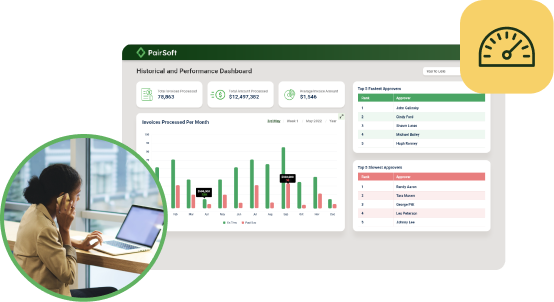
Wadih Pazos
Wadih founded both PairSoft and PaperSave. He is an avid technologist who specializes in streamlining operations and maximizing productivity.
View all posts by Wadih PazosWadih Pazos

Unfortunately, many are scared off from document management software based on their nervousness on the transition process, specifically around scanning that is a critical part of organizing and archiving data to be used within the system in the years to come.
Though it may seem daunting, project managers and office employees need not be afraid. If they put these simple practices into action, scanning won’t give anyone gray hair.
One of the many reasons why businesses abandon their clunky old filing cabinets is because they tend to grow disorganized. The Paperless Project, a leading advocate for electronic document imaging technology, stated that the average office worker wastes over a full day rifling through old papers every year, using up company money and damaging employee morale.
This can be avoided in the digital sphere simply by giving the documents a once-over before electing to scan them into the new document management system. By eliminating unneeded or outdated forms, you will save time while scanning in necessary files and simultaneously dodge the risk of leaving any sensitive information in a cloud system where it may be compromised.
There are a number of useful applications that have surfaced in the past several years that improve a project manager’s electronic workflow while scanning data into a paperless system. Mashable writer Stephanie Buck made a comprehensive list of solutions for companies to use, available at a relatively low price.
Amongst them are Android and Apple applications DocScan (sold for $4.99), ScannerPro (sold for $6.99), Genius Scan (free), CardMunch (free), and CamScanner (sold for $4.99).
Each of these programs has its own strengths and premium features that a business can explore, and at this low price can remove the tedious process of the scanning solutions of old, which historically takes up much more time. Information from these apps can be easily transitioned to a paperless document management system to be organized in the cloud.
Another rookie mistake that many businesses make when transferring their documents is dumping all the data at once without an organized system to sort content into. This is by no means an effective use of document imaging workflow.
Project managers should be sure to work with a business to design a template that employees and executives can access and share documents within. Sharon Profis and Jason Cipriani of CNET recommended in a piece on photo scanning that not one item should be scanned in before a system is decided upon.
Following the scanning and organization of data within the office’s new document management software, all paper should be disposed of appropriately to ensure that no information is compromised. The best practice is to ensure that the former contents of your filing cabinet are shredded.
When done properly, the scanning process can be a painless first step in finding freedom in paperless technology.


Many organizations start with manual receipt handling, fragmented card feeds and slow AP processes. Implement AI agents to auto-capture receipts, route approvals, enable punch-out buys and post to the ERP.
Result: faster batching, fewer errors and cost savings. “This saves us hours every month.”
Many organizations face slow, paper-heavy AP and fragmented procurement that waste time and inflate costs. AI Agents can automate approvals, PO matching and record sync to improve speed, accuracy and control. Client quote: “It freed up hours and made our process reliable.”
Operational drag and rising costs slow growth: teams waste time on manual tasks, misaligned priorities and opaque processes. AI Agents help automate routine work and coordinate actions across teams. “We’ve lost time to repeats and handoffs,” says a typical client.
Companies struggle with manual procurement, fragmented approvals, and costly integrations that slow growth and obscure spend. Our AI Agents streamline requisitions, POs, and invoice matching to cut manual work and improve visibility. “We were wasting time and missing insights,” says a client.

Many teams start with fragmented PO/AP systems, manual matching and delayed financial reporting. Deploying AI agents to automate PO checks, real-time encumbrance tracking and invoice matching reduces processing time and errors, delivering live budgets and faster closes. “Finally, we can see current balances and approve instantly.”
Many companies juggle growing invoice volumes and legacy systems. They struggle with manual processes, compliance gaps and limited headcount. Our AI Agents automate integrations, enforce rules and surface exceptions. The typical outcome: faster closes and measurable ROI. “We stopped chasing invoices.”